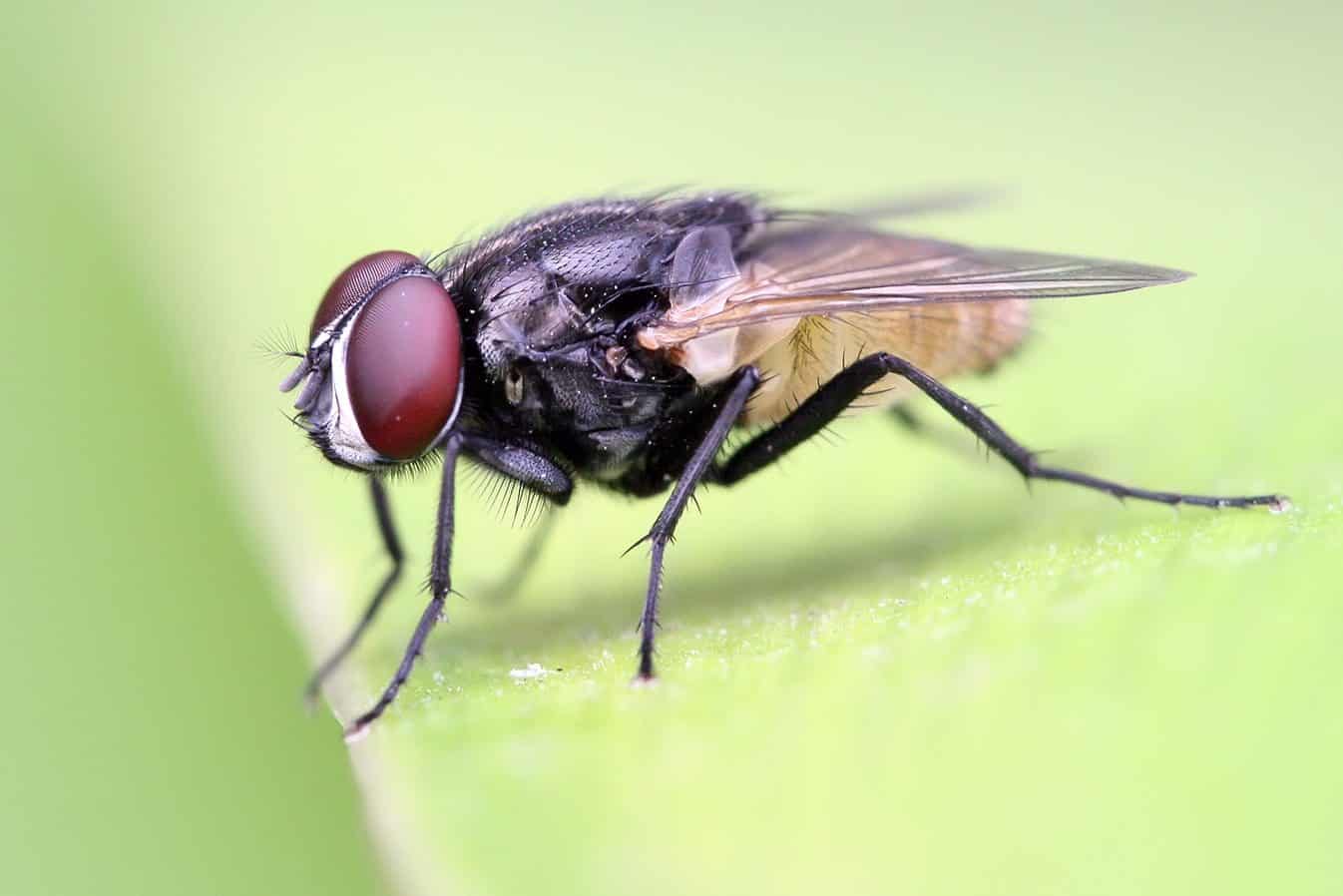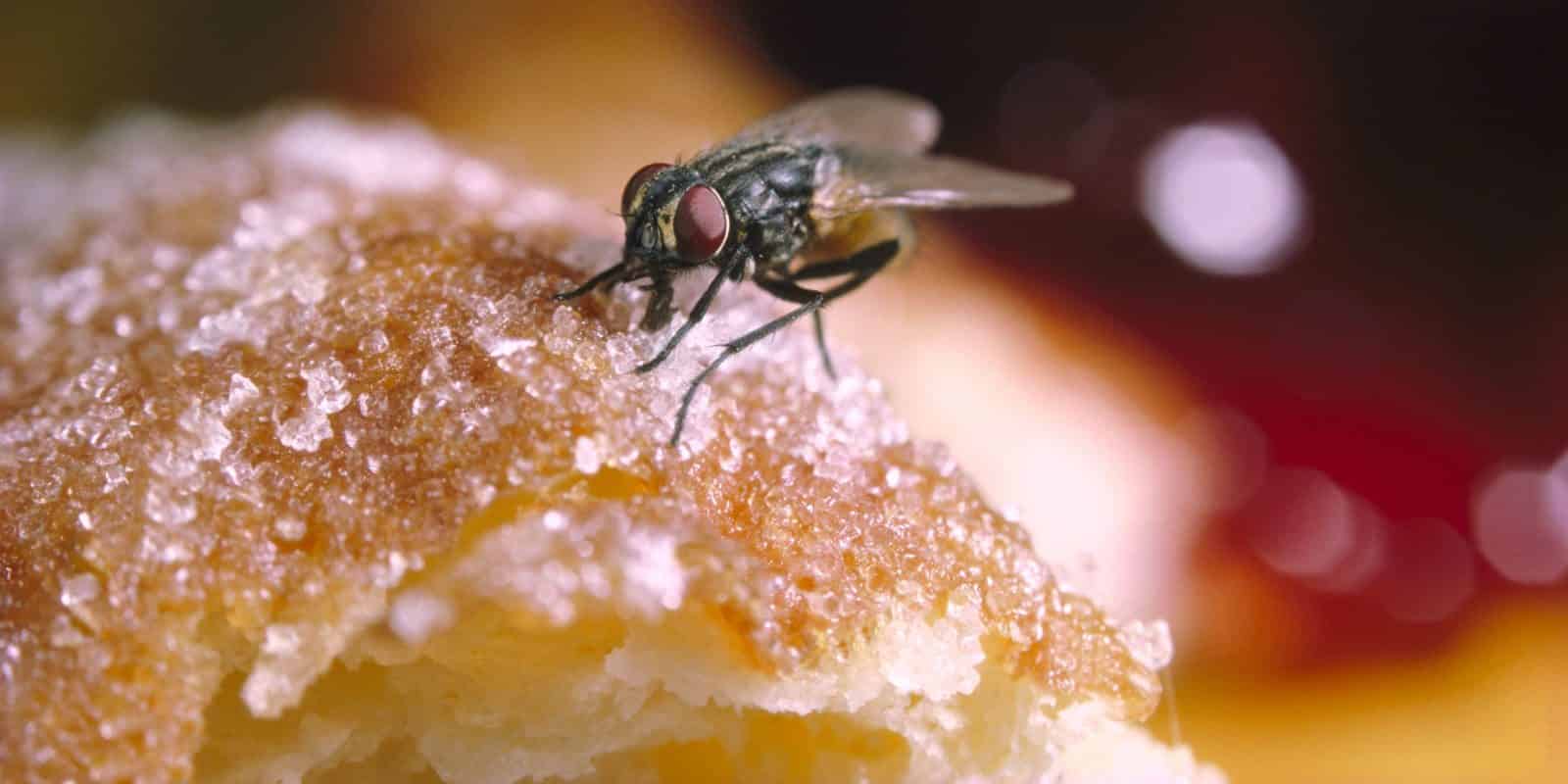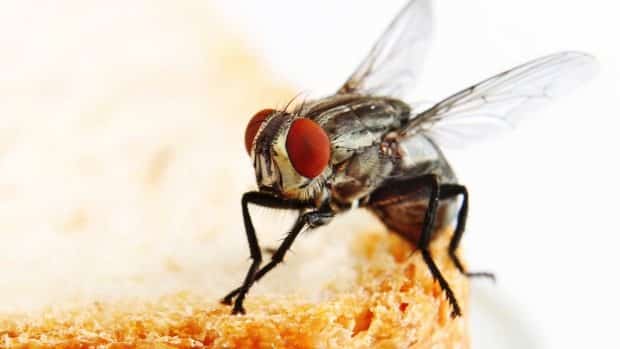Hacking into Houseflies for Disease Outbreak Monitoring
Flies really do spread germs, and bacteria hitching a jolly ride on flies and spreading through town are so busted.
I’ve always wondered the same thing. No matter how many times you shoo, swat and scream, “What do you want from me? Go away!” flies just never seem to get the point. They just keep on coming back for more. Given the common housefly doesn’t have any interest in sucking blood, you think they’d fly away from humans; after all, we’re a lot larger, more intimidating and come brandishing swatters.
The fact of the matter is that houseflies are scavengers and land on us because, well, they like us. The human body, like some of their favourite food sources- feces, food and rotting flesh- radiates a sense of warmth and nourishment. And while not interested in biting, the fly does want to suck up the salt, dead skin, oil and whatever they find edible on the exposed epidermis with their straw-like tongues.
But don’t brush them off just yet, as an international research team led by Nanyang Technological University have proposed that swarms of flies can be used to help monitor disease outbreaks.
This follows
their research that shows how whole communities of bacteria – known as a microbiome – can “hitch a ride” on common carrion flies and can be transferred to any surface where the flies land.To shed some light on these said communities of pathogens, researchers used DNA sequencing techniques to study the collection of microbes found in and on the bodies of the house fly and the blowfly. In total, they analyzed DNA found on 116 flies from three different continents. They found that the house fly, which is virtually ubiquitously in the world, can carry up to 351 types of bacteria, while the blowfly, limited to the warmer parts of the world, carried 316. All analyzed individuals carried a large number of pathogens.

“Our study has shown that bacteria can ‘fly’ by hitching a ride on common flies,” says Stephean Schuster, a research director leading the study. “They pick up the microbiome on their feet, spread them across their wings in a similar way like how we might comb our hair, and then proceed to disperse them on surfaces that they land on.”
”People had some notion that there were pathogens that were carried by flies but had no idea of the extent to which this is true and the extent to which they are transferred,” Prof Donald Bryant of Penn State University, a co-researcher on the study.
The team also broke down the blowfly microbiome by host body part, namely, head, thorax, abdomen, and leg plus wing. The limbs and wings were distinguishable by the presence of Helicobacter species, including H. pylori, which can cause ulcers. All 15 of the host flies that had Helicobacter species had been caught in Brazil, and the authors suspect the flies picked the bacteria up from sewage.
“Whether H. pylori survives and persists on the outer body of the fly has not been determined,” the researchers wrote in their report. However, a laboratory experiment demonstrated flies could pick up E. coli after walking on a Petri dish covered in the bacteria, and then spread the colonies to sterile plates they later visited.
Researchers used a scan electron microscope to find where bacterial cells and particles attach to the fly body. The electron microscope captures an up-close look at the head of a blowfly in this picture.
Blowflies and houseflies—both carrion fly species—are often exposed to unhygienic matter because they use feces and decaying organic matter to nurture their young, where they could pick up bacteria that could act as pathogens to humans, plants, and animals.
The study also indicates that blowflies and houseflies share over 50 percent of their microbiome, a mixture of host-related microorganisms and those acquired from the environments they inhabit. Surprisingly, flies collected from stables carried fewer pathogens than those collected from urban environments.
But it’s not all bad news for flies. One of the more unusual futures that could await these house flies could have them acting as a type of early-warning systems — similar to the way miners took canaries underground and were alerted of dangerous airborne substances when the birds died.
As “bionic drones,” researchers believe that the flies could be beneficial in early warning systems for disease outbreaks and even in agriculture. This way, the pathogen could be dealt with before it spreads.
“This is a great example of how observations from basic research on how diseases spread might be translated into viable and useful applications, opening up new avenues for future technology,” said Professor Stephan C. Schuster of Nanyang Technological University.
So perhaps, flies will one day make up for the hundreds of meals they ruined.































